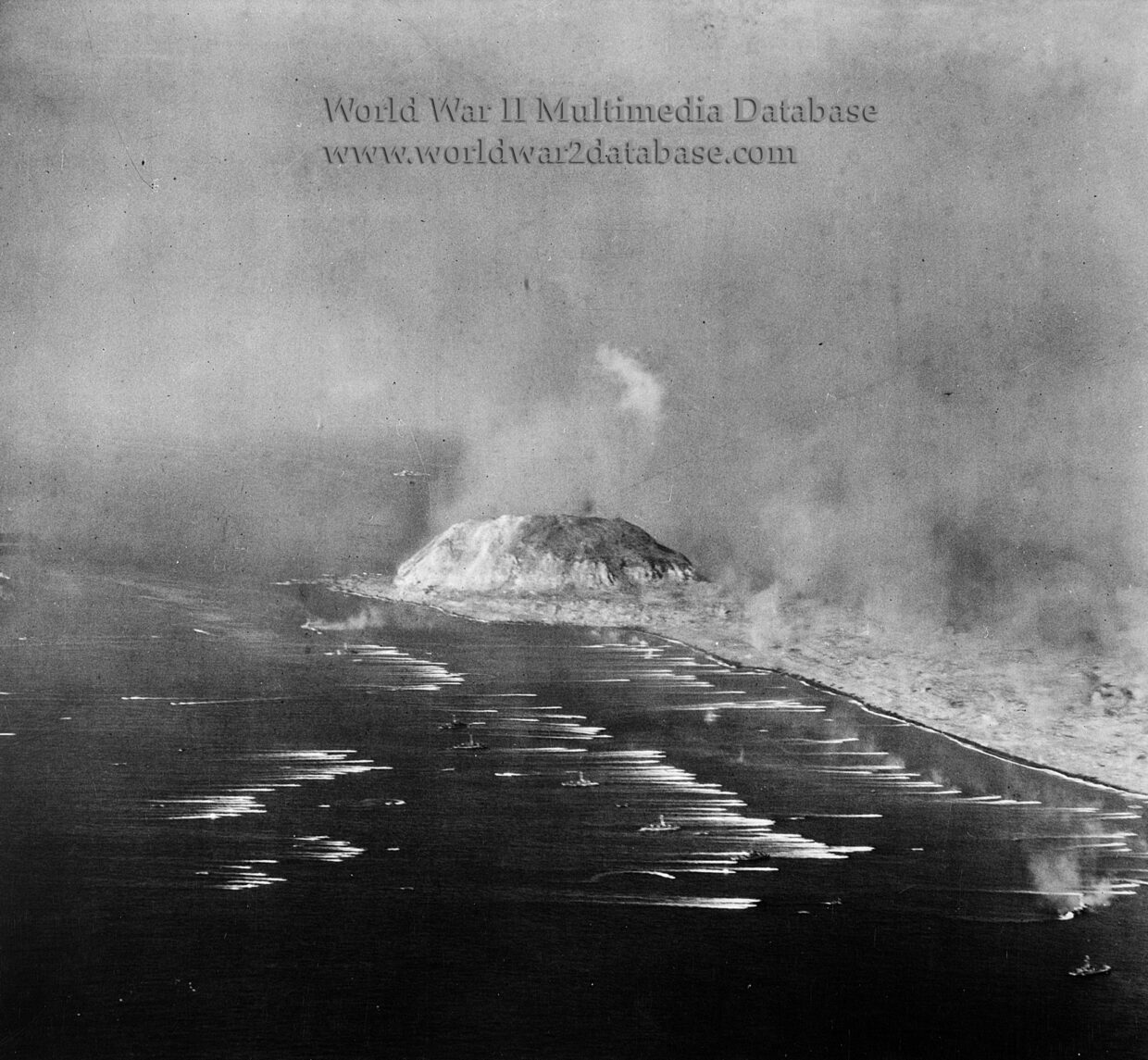| First wave heads for the beach. As cruisers and battleships fired, LST‘s and transports eased slowly into assigned areas and made ready to land the landing force. Bow doors yawned open and ramps dropped slowly to the water; APA‘s lowered landing craft, which circled as they waited to receive troops. On the tank decks of the LST‘s all was noisy activity as motors started and assault Marines clambered into their assigned LVT‘s to await the launching signal. This came at 0725, and 20 minutes later 482 amtracs that would carry eight battalions into battle were churning the water. At 0830 the first wave (68 LVT(A)‘s) crossed the line of departure and headed for shore behind gunboats that poured rockets and 40 mm shells into the beach. 30 minutes were allotted for each assault wave to travel the 4000 yards (3650 meters) from the line of departure to the shore. Successive waves crossed the line with 250 to 300 yards between them. The LVT(A)‘s of the first wave set their tracks down on Iwo Jima at 0902 Hours and commenced moving forward. They soon found, however, that the terrace immediately behind the beach, up to 15 feet (4.5 meters) high, masked the fires of many. Those that could not give effective support retracted from the beach and covered the landing of troops by engaging inland targets from the water. Three minutes later (0905) the second wave, the first to land troops, waddled up out of the water. As ramps were lowered all along the 3500-yard (3200-meter) landing beach, Marines of the Fourth and Fifth Divisions swarmed out of their vehicles and hit the volcanic sand at a run that slowed almost immediately to a laborious walk as their feet sank ankle deep into soft, loose volcanic ash. United States Major General Keller Rockey‘s Fifth Division and Major General Clifton Cates‘ Fourth Division landed abreast on beaches Green Yellow, Red and Blue, each with two reinforced regiments in the assault. From left to right these were: 28th Marines (Colonel Harry B. Liversedge), 27th Marines (Colonel Thomas A. Wornham), 23rd Marines (Colonel Walter W. Wensinger), and 25th Marines (Colonel John R. Lanigan). Still under cover of the naval barrage, these units hastily reorganized and commenced the inland push. During these first few minutes Japanese resistance was light. Both divisions reported only scattered mortar, artillery, and small-arms fire, and excepting a few land mines, no man-made obstacles were found on the beaches. The Japanese fire would increase in rapidity and lethality within twenty minutes. | |
| Image Filename | wwii1180.jpg |
| Image Size | 1.91 MB |
| Image Dimensions | 2766 x 2553 |
| Photographer | Unknown |
| Photographer Title | |
| Caption Author | Jason McDonald |
| Date Photographed | February 19, 1945 |
| Location | Landing Beaches |
| City | Iwo Jima |
| State or Province | Bonins |
| Country | Japan |
| Archive | National Archives and Records Administration |
| Record Number | |
| Status | Caption ©2007, ©2024 MFA Productions LLC Please Do Not Duplicate or Distribute Without Permission |

Author of the World War II Multimedia Database

